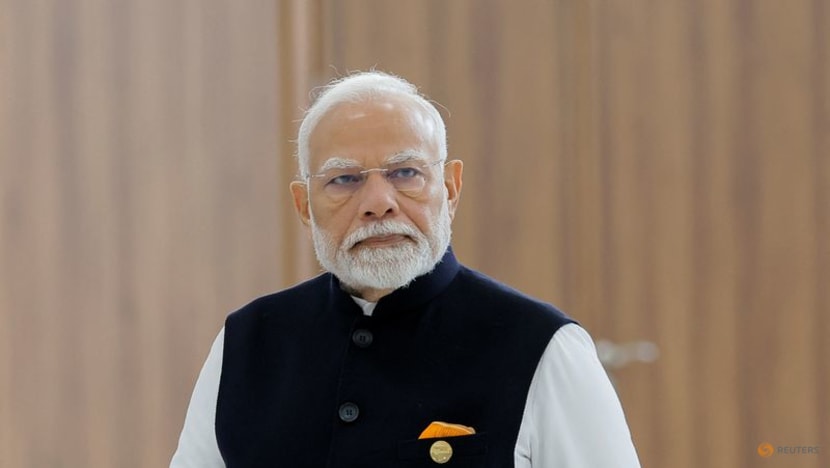Advertisement
The former prime minister’s death deprives India of sage counsel at a time when his reforms are being replaced by empty bluster, says Bloomberg Opinion’s Andy Mukherjee.

HONG KONG: Manmohan Singh was the face of India’s transformation. As finance minister in the early 1990s, and from 2004 as its prime minister for a decade, his reforms loosened excessive state controls, opened up the economy, pulled millions out of poverty and made the West accept the nuclear-armed nation as an ally.
Or at least, that’s how his legacy will be remembered globally. But to my generation of Indians, Singh, who died at 92 on Thursday (Dec 26) night in a New Delhi hospital, was above everything else the embodiment of hope.
He instilled in us a strong belief that a market economy would work. Not just for a tiny elite in New Delhi and Mumbai, but for a majority scattered across smaller towns and villages, battling against overwhelming odds of economic and educational poverty and social discrimination.
A TOP TECHNOCRAT
His own story gave us confidence. A 15-year-old Sikh refugee boy in newly independent India, whose family had fled from Pakistan during the subcontinent’s 1947 partition, he went on to study economics at Oxford and Cambridge and built an impressive career as a top technocrat.
Singh and his colleagues were able to convince us that in a post-socialist, market-led economy, we, too, would be free to chase our dreams. With education and hard work, our lives, too, would be vastly better than our parents’; upward mobility would no longer be an exclusive preserve of the privileged.
Through the 1990s, the reform project stayed on track even as governments changed. But the promise started to fray during Singh’s second term as prime minister.
The unwieldy Congress-led coalition government he ran from 2009 was besieged, from one side, by crony capitalists gorging on debt from state-owned banks only to siphon off money into their Swiss bank accounts. From the other side, it was under attack by a political opposition that blamed Singh’s indecisive leadership for rampant corruption, high inflation, slowing growth and a falling rupee.
“I do not believe that I have been a weak prime minister,” Singh said in one of his last press conferences, just a few months before the Hindu right-wing leader Narendra Modi’s Bharatiya Janata Party swept the 2014 election. “I honestly believe that history will be kinder to me than the contemporary media or for that matter the opposition in parliament.”
That prediction didn’t take too long to get tested. In November 2016, Prime Minister Modi banned 86 per cent of India’s currency overnight. Singh, who described the move as “organised loot and legalised plunder” said it would crush economic growth. He was right.

INDIA AT A CRITICAL TIME
With his death, India has been deprived of sage counsel at a time when growth is once again anaemic, policymaking has become whimsical, many industries are facing extreme concentration of economic power, the middle class is feeling weighed down by taxation, and the poor are being excluded from government programmes in the name of plugging leakages.
Religious strife is on the rise, and politicians of all hues are bribing voters to capture power where they can, without sparing a thought for how best to use national resources for development.
After 10 years in the top job, Modi’s personality cult is weakening, but to his supporters, the belief in a prosperous India has become an uncritical act of faith.
That wasn’t the effect Singh intended when, in his first budget speech in 1991, he channelled Victor Hugo: “No power on earth can stop an idea whose time has come,” he said. “The emergence of India as a major economic power in the world happens to be one such idea.”
HEADED ONCE AGAIN TOWARD PROTECTIONISM
Well, India is now the world’s fifth-largest economy, on track to becoming the third biggest in a few years.
But that’s largely a statistical artifact: A product of extremely unequal growth that’s making a tiny section of 1.4 billion people very rich. On average, it’s still a lower-middle-income nation with per capita income of US$2,500 last year, nowhere near South Korea’s US$35,000.
Korea, which used to be as poor as India in the 1960s, inspired Singh’s vision. He couldn’t replicate the “miracle on the Han” in his lifetime. But a bigger worry is that New Delhi, lurching once again toward protectionist trade policies, is no longer even on the path to that goal.
And that will be a shame, if by choosing to replace rational analysis with empty slogans, and genuine reforms with nationalistic chest-thumping, the country lets down the memory of its quiet internationalist.
Related Topics
India
